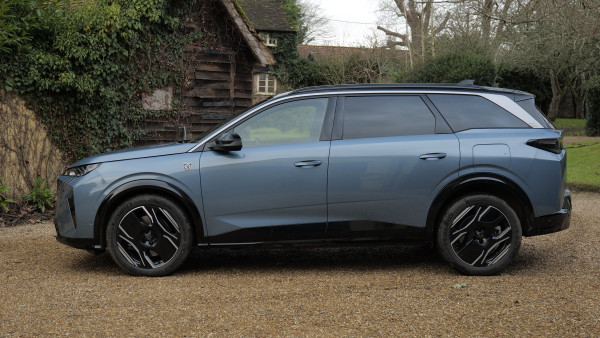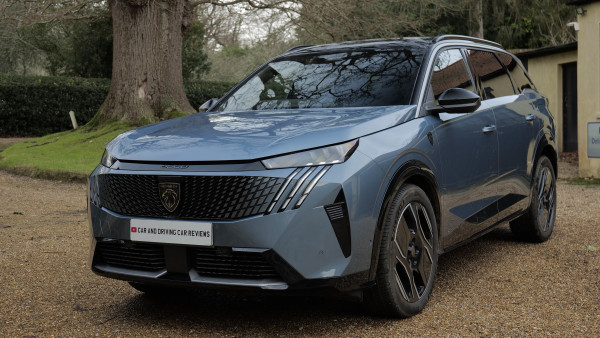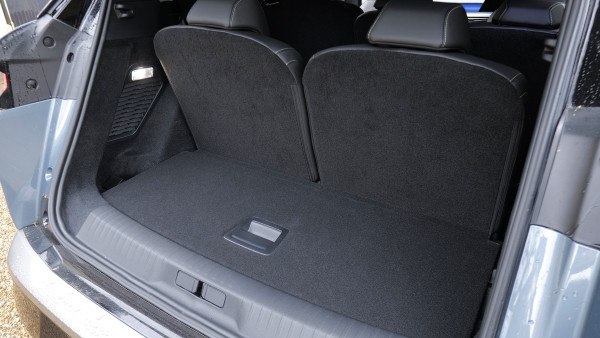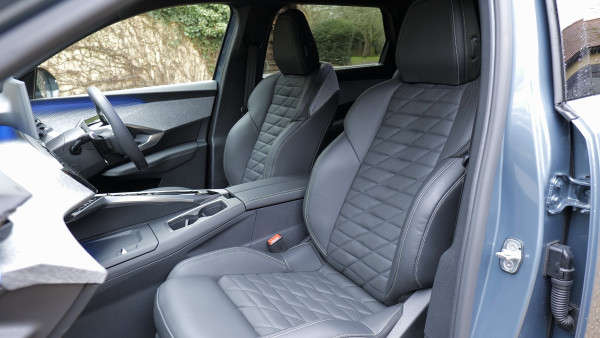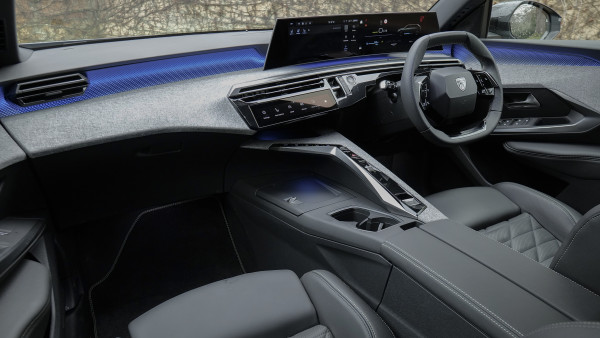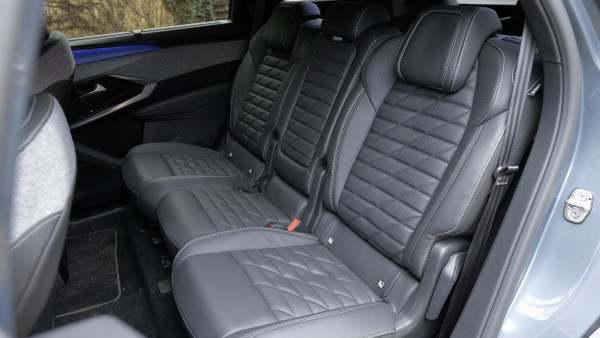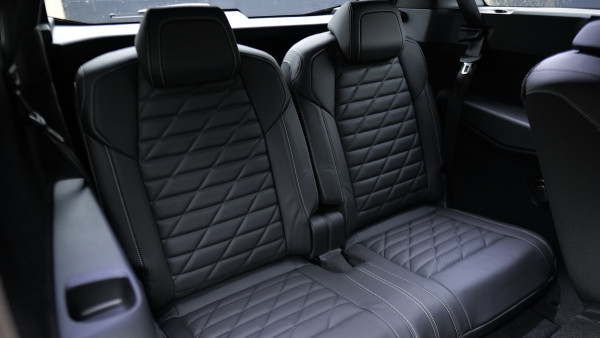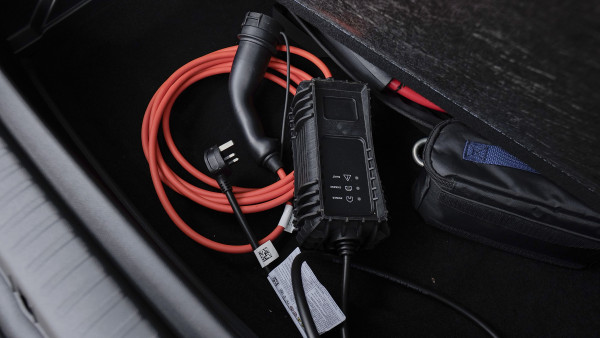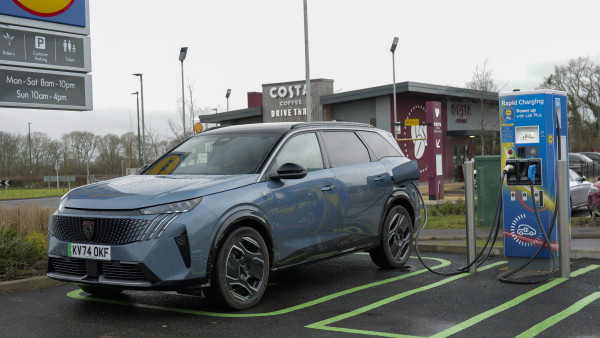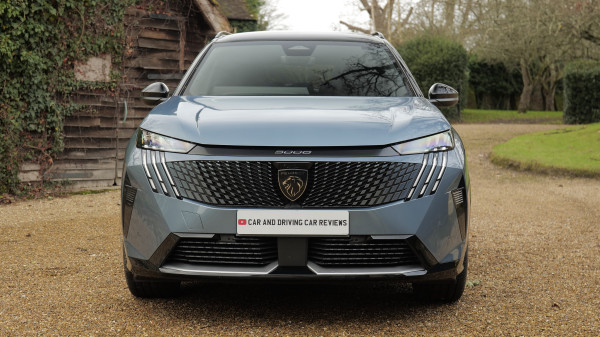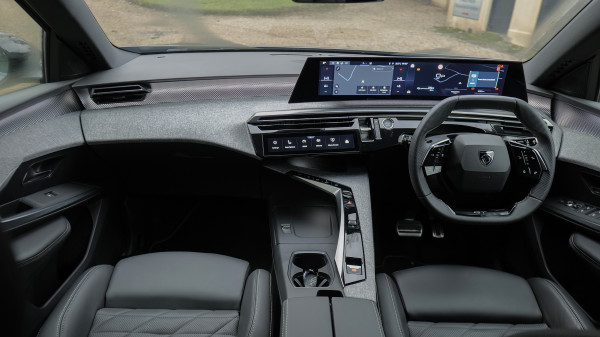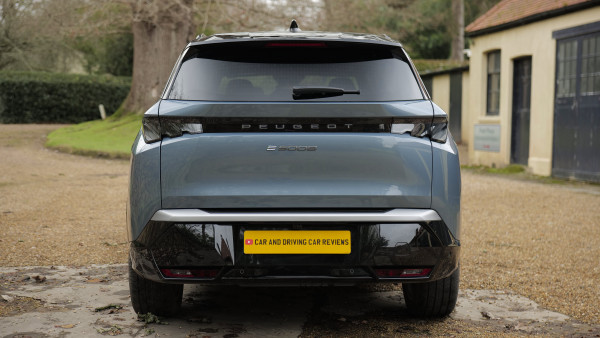Peugeot's third generation 5008 seven-seat SUV could be at its best with self-charging Hybrid power. Jonathan Crouch takes a look.
Ten Second Review
Your perfect version of the third generation Peugeot 5008 might be this one, the Hybrid 136 e-DSC6. It's not possible to plug it in, but if you want this stylised Gallic seven-seat SUV, it makes more sense than any other powerplant in the range.
Background
Wait long enough and everything comes along at once. Take electrification in Peugeot's largest SUV, the seven-seat 5008, for instance. From 2017 to 2023, it was on sale here without the slightest hint of electric or Hybrid power beneath the bonnet, even though Peugeot had a PHEV system that might have been made to fit. As production of the second generation 5008 was coming to an end in late 2023 though, Peugeot introduced a non-plug-in 48V Hybrid variant. And continues with that 136hp engine as the entry-level unit for the third generation model we look at here.
With this MK3 design, you can also have a PHEV and a full-electric 5008, but arguably this much more affordable non-plug-in 48V Hybrid model makes more sense. Is this lightly electrified seven-seat family SUV a good fit for the current market? That's what we look at here.
Driving Experience
As with its 308 and 408 showroom stablemates, the 5008 Hybrid 136 e-DSC6 uses this 48V Hybrid unit only in its faster 136hp form (smaller Peugeot models like the 208 supermini also get it in lesser 100hp guise). As ever with a full-Hybrid, you have to have an auto gearbox, though this is a rather different kind of self-shifting transmission - and not only because it's of the dual-clutch sort and restricted to six speeds. Built into its casing is a DC inverter, an Engine Control Unit and, most significantly, a little 22hp electric motor powered by a tiny battery secreted beneath the front passenger seat.
On the move, this motor can work together with this Hybrid model's 1.2-litre petrol engine - or separately from it. And, unlike with a mild hybrid system like that fitted to say, a Volkswagen Tiguan, here the car can be driven for short urban distances (under 18mph) on electric power alone.
During deceleration, the petrol engine stops and the e-motor acts as a generator to recharge the Hybrid system's 48V battery. The battery also stores the energy recuperated by the regenerative braking system. The motor additionally assists the engine under acceleration - such as from standstill to 62mph, which in 'Sport' mode takes 10.4s en route to 124mph.
Design and Build
Apart from the badging, there aren't any visual giveaways as to this model's 48V Hybrid status. You wouldn't call this third generation 5008 pretty, but it looks quite futuristic - perhaps more the kind of car the current 3008 would have been if Peugeot hadn't decided to make that model a coupe-style SUV. As you'd expect given the need to fit in three seating rows, this 5008 is much boxier than its stablemate - and pretty large, the new STLA platform facilitating a length increase of around 150mm over its predecessor, which means it's now slightly longer than a rival Skoda Kodiaq. Overall, it's 4.79m long, 1.69m tall and 2.1m wide (including the mirrors). So not quite Kia EV9 territory, but not far off.
Inside, it certainly feels like a car designed in the new electric era, the up-front cabin space replicating the 3008 design. Which means it's unusual and different, with a high dual-level centre console and an upper 'floating' 21-inch panoramic screen pod. This houses the infotainment system and, to the right of it, the driving information display, which as usual in a Peugeot you view over the top of the wheel rather than through the spokes. There's a small squared-off steering wheel, while swathes of grey fabric on the doors and the 'spine' that connects the dash to the centre console create cool Scandinavian-style vibe.
But practicality will be a key requirement for 5008 customers - who may be disappointed to find that the three individual second row seats of the previous generation model have been replaced by a different configuration. This one lacks the old individual ISOFIX points but offers two larger more comfortable outer seats, flanking a narrow one in the middle that does without the child seat mount. The bench base slides by up to 150mm and the backrest reclines: even before you start fiddling with this, there's plenty of head and legroom.
The third row isn't too difficult to get to and, thanks to this MK3 model's extra 60mm of wheelbase length, is now a little more spacious - though it's still clearly primarily intended for kids. A version without third row seating may in future be offered. With the third row in place, there's 348-litres of boot space. Fold the rear-most seats down and the revealed completely flat area is 916-litres in size. There's 2,232-litres of space with the second row folded too.
Market and Model
This Hybrid 136 e-DSC6 variant is the most accessibly-priced model in the third generation 5008 range, pitched from launch from just over £38,000 in base 'Allure'-spec form. You'll need £3,380 more for top 'GT'-spec. To give you some perspective, those figures undercut the Plug-in Hybrid model by around £5,000; and the full-electric E-5008 by over £10,000.
'Allure' trim includes 19-inch alloy wheels, LED headlights, rear parking sensors, a reversing camera, cruise control, body-coloured accents for the front grille and keyless entry. Plus ambient lighting linked to the drive modes, a wireless smartphone charging pad and wireless 'Apple CarPlay' and 'Android Auto' smartphone-mirroring built into the panoramic 21 inch HD curves display. There's keyless entry, tri-zone automatic climate control and an HD reversing camera with a wash system and rear parking assistance.
'GT' spec upgrades you to 20-inch wheels and adds a contrasting black roof and rear spoiler, as well as a heated steering wheel, heated front seats, pixel LED headlights with adaptive high beams, adaptive cruise control with stop and go functions, a hands-free opening tailgate and front parking sensors. You also get a hands-free electric tailgate and Alcantara upholstery.
Each spec level can be specified with a choice of various different options packs. There's lots of camera safety kit too, including autonomous braking and Lane keep assist. And there are six different paint colours.
Cost of Ownership
This 5008's self-charging Hybrid powertrain can operate more than 50% of the time in zero-emission all-electric mode during low-speed urban cruising, offering improved fuel economy over a conventional petrol engine (and the previous BlueHDi diesel) and (for a petrol unit) low levels of CO2. The actual 5008 Hybrid 136 e-DSC6 figures are up to 52.5mpg on the combined cycle and up to 122g/km of CO2. Thanks to the CO2 reduction, the Hybrid powertrain has a reduced rate of Vehicle Excise Duty and a lower rate of Benefit-in-Kind Tax for company car drivers (30% compared to 34% for the old BlueHDi 130 diesel version). But of course that's nothing like as good a tax return as you'd get from the E-5008 full-Electric model Peugeot really wants to sell you, which like all EVs, is BiK-rated at just 2% - until Spring 2025 anyway.
This Peugeot Hybrid's petrol engine has been optimised for efficiency and operates in the Miller combustion cycle. This thermodynamic cycle is enabled by the variable geometry turbocharger, which enhances performance at low rpm, and variable valve timing. A belt-driven starter combines with the e-motor to start the petrol engine from cold. The belt-starter also restarts the engine quickly and seamlessly while driving. As for peace of mind, well there's the usual unremarkable Peugeot three year 60,000 mile warranty.
Summary
If you're set on choosing a 5008, we can't really see why you wouldn't choose this Hybrid 136 version. It can't offer you the tax breaks of its Plug-in Hybrid and full-electric 5008 range stablemates, but its asking prices are vastly lower and its 48V engine can still run on electric power much of the time during urban motoring. It's certainly a big step forward from the old-shape conventional PureTech 130 un-electrified variant.
Engines like this for cars like this might not be a long term solution. But they're pretty good alternative right here, right now.
